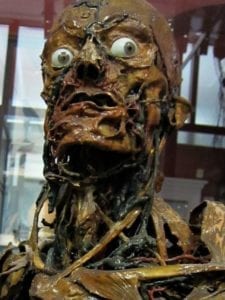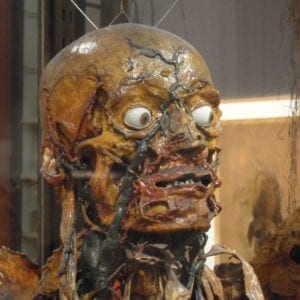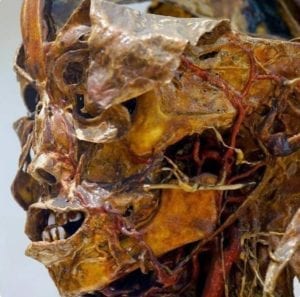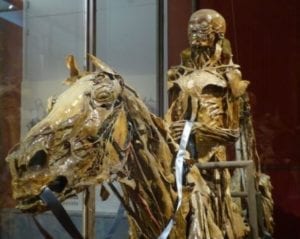Honoré Fragonard (1732–1799), cousin of the much more famous Rococo painter, trained to be a surgeon but then pursued a career as an anatomist. He first worked in Lyon at the world’s first veterinary school, then served for six years as director of the veterinary school established by Louis XV in 1765 in a suburb of Paris. Spending his life in what has been called the vague terrain between science and art, he dissected human and animal cadavers at the rate of two a week and produced hundreds of specimens that he exhibited in the museum or prepared for upper class collectors. Rather than making wax specimens like other anatomists, he embalmed and preserved actual bodies, injecting their blood vessels and bronchial tubes, peeling the skin from the body, and producing rather gruesome-looking but remarkable specimens. Dismissed in 1771 in response to rumors that he was a madman, he continued to prepare his brand of anatomical specimens for the private cabinets of curiosities favored by aristocrats.
Of Fragonard’s 700 models most have vanished and only twenty-one have been preserved. They are on display at the Musέe Fragonard d’Alfort just outside of Paris, and include the Horseman of the Apocalypse—based on Albrecht Dürer’s print—as well as dissections of a human head, an arm, and a man with a mandible, fetuses, a monkey, and a goat’s dissected trunk and head.





Leave a Reply